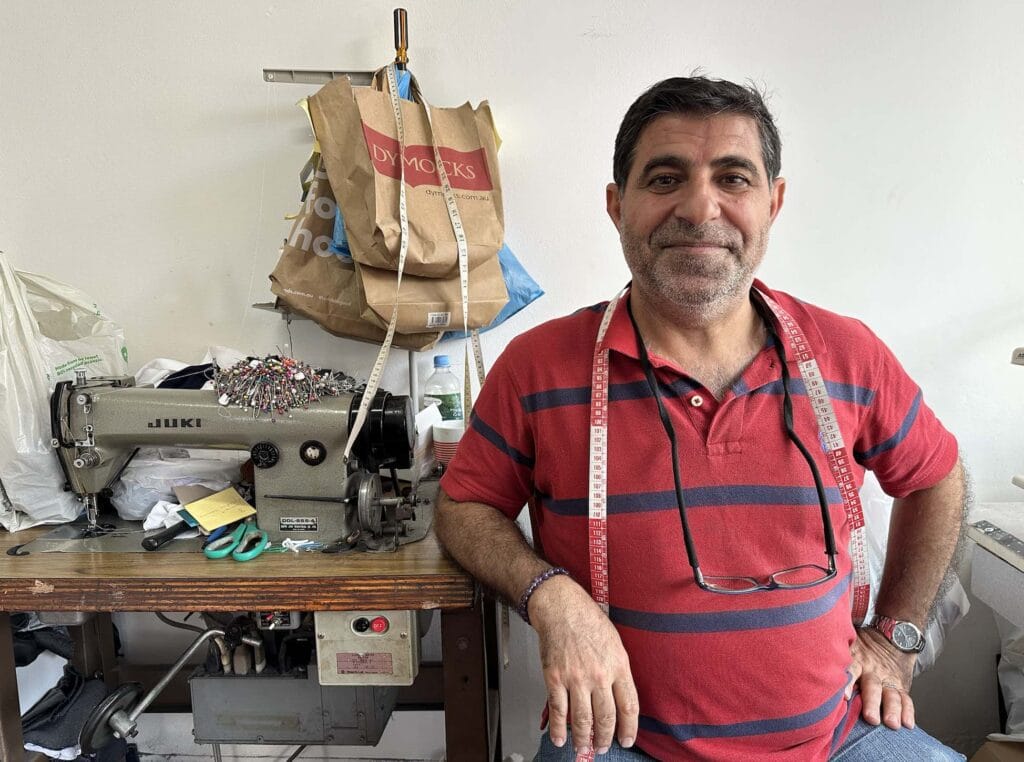Tailor Perth Professionals: Boost Your Fashion with Custom Tailoring
Tailor Perth Professionals: Boost Your Fashion with Custom Tailoring
Blog Article
Comprehending the Tailoring Refine: From Material Selection to Final Fitting for the Perfect Closet
The tailoring procedure is a complex interplay of art and scientific research, beginning with the important choice of textile choice and finishing in the exact modifications of last fittings. Each textile type brings one-of-a-kind qualities that affect not only the visual charm but likewise the garment's longevity and suitability for numerous events. Recognizing the subtleties of customizing methods can raise one's closet to unmatched levels of sophistication. As we explore these elements even more, one must take into consideration how even the tiniest details can dramatically influence the total outcome of one's individual style.
Importance of Material Option
Choosing the best fabric is important in the customizing procedure, as it directly affects the convenience, sturdiness, and overall visual of the final garment (tailor perth). The choice of material establishes the structure for the garment's capability, efficiency, and style. Different textiles possess distinct homes, such as stretch, breathability, and weight, which can considerably influence just how the garment drapes and fits the body
Moreover, material choice affects the garment's long life and ease of care. Premium textiles can hold up against damage, maintaining their look and structure gradually, while lower-quality materials might bring about pilling or fading. Additionally, the ideal fabric adds to the garment's capability to transition across celebrations and seasons, thereby boosting versatility.
A tailored item made from an ideal fabric not only showcases workmanship but additionally elevates the user's confidence. Recognizing the nuances of material option is vital for any type of customizing endeavor. It makes sure that the end product not only meets the visual wishes of the client however likewise straightens with practical needs, thus attaining a harmonious equilibrium between type and feature in the tailored wardrobe.
Types of Fabrics and Their Uses
Recognizing the numerous kinds of textiles available is vital for making informed decisions during the customizing process. Each fabric possesses one-of-a-kind qualities that dictate its suitability for details garments and occasions.
Its versatility permits it to be customized right into every little thing from t-shirts to dresses. Its natural elasticity helps garments maintain form over time.
Silk exhibits luxury and is light-weight, making it perfect for eveningwear and fragile blouses; nonetheless, it calls for cautious handling because of its frailty. Linen, with its distinctive finish, is a prominent option for cozy environments, providing a crisp and airy feel, however it wrinkles quickly, which might affect the garment's look.
Artificial fabrics, such as polyester and nylon, deal durability and resistance to creases, making them appropriate for everyday wear and energetic apparel. Understanding these material kinds and their residential properties enables much better decision-making, making sure that each tailored item not just fits well however additionally aligns with the desired function and celebration.
The Tailoring Strategies Discussed
The art of customizing relies upon a selection of methods that transform material into well-fitted garments. Central to this process is pattern drafting, where a dressmaker develops design templates based on the customer's dimensions and wanted style. This preliminary action makes sure that the garment will certainly fit the user appropriately before any reducing occurs.
As soon as patterns are established, reducing strategies come right into play. Precision is critical as inaccuracies can bring about misfitting garments. Tailors usually use different reducing techniques, such as single-layer cutting for complex layouts and multiple-layer cutting for performance on standard patterns.
Basting is one more important technique, permitting dressmakers to temporarily sew textile assemble for an initial installation. This approach offers the possibility to analyze the drape and overall shape before final stitching.
Seaming strategies, including french seams and flat-felled seams, improve the garment's toughness and aesthetic allure. Tailors also use methods such as interfacing and extra padding to supply framework and shape to link details locations, like shoulders and collars.
Last but not least, completing techniques, consisting of hemming and side completing, make sure the garment's durability while supplying a refined appearance. With each other, these methods create the backbone of reliable customizing, causing elegant, custom-fit apparel.
Fitting Adjustments and Considerations

Key factors to consider consist of the shoulder fit, which ought to neither sag nor limit motion, and the sleeve length, which should enable comfy arm movement while maintaining a sleek appearance. Furthermore, adjustments at the waistline can improve the shape, with choices to let out or take in material as needed.
The increase of trousers is an additional important factor; it must rest pleasantly above the hips without causing discomfort, enabling convenience of movement. Hemming lengths for both trousers and skirts should show the user's preferred design while respecting percentages.

Maintaining Your Tailored Clothes
Always adhere to the treatment label directions, which may suggest completely dry cleansing for delicate fabrics or maker washing for more resilient products. Stay clear of regular laundering, as this can use down the textile and modify the garment's form.
Storage space is just as important; usage cushioned hangers for coats and coats check here to keep shoulder framework, and shop pants folded neatly or hung to stop creasing. Shield garments from straight sunshine, which can fade shades and damages fibers.
In addition, regular evaluations for small repairs can prevent larger problems. Look for loosened buttons, tearing seams, or signs of moth damage, addressing these issues without delay to keep the garment's honesty.
Lastly, take into consideration seasonal rotation. Wearing customized pieces in moderation permits textiles to recuperate, expanding their life-span. By applying these maintenance methods, you can guarantee that your customized garments continue to be as beautiful as the day you first used them, enhancing your perfect wardrobe for many years ahead.
Final Thought
The tailoring procedure, encompassing fabric choice, experienced techniques, and exact fitting modifications, plays a crucial function in producing garments that improve both convenience and style. Each phase adds to the overall efficiency of the end product, ensuring that clothes not just i thought about this fits well however also shows individual identity. Understanding the value of maintenance prolongs the life of tailored garments, strengthening their worth in a well-curated wardrobe. A comprehensive strategy to customizing culminates in a refined and confident appearance.
Selecting the right textile is essential in the tailoring process, as it straight affects the convenience, durability, and total visual of the final garment. The choice of fabric sets the structure for the garment's performance, efficiency, and design. Different materials possess one-of-a-kind buildings, such as stretch, weight, and breathability, which can dramatically affect how the garment drapes and fits the body.
The art of tailoring depends on a variety of strategies that change textile into well-fitted garments.The customizing procedure, incorporating textile choice, competent strategies, and precise fitting modifications, plays a vital function in creating garments that boost both comfort and design.
Report this page